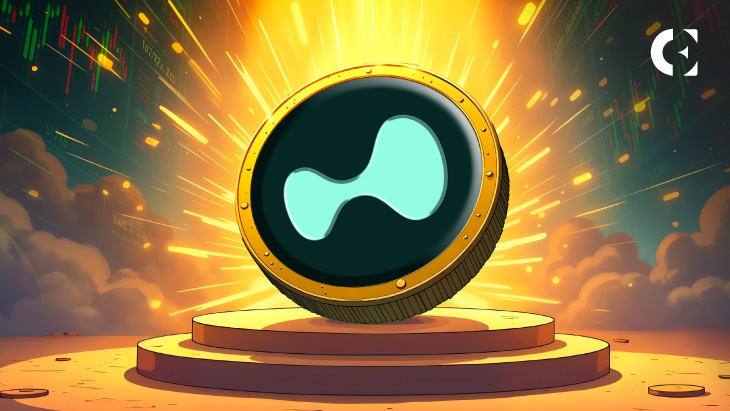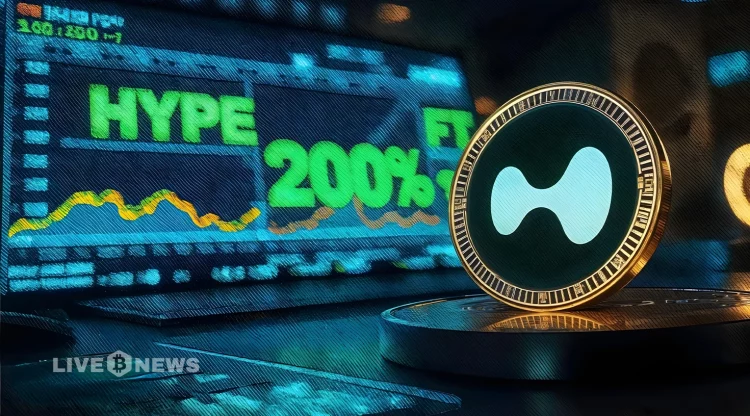The cryptocurrency market has developed a remarkably consistent pattern around new token launches—a rhythmic dance of anticipation, euphoria, and disappointment that repeats across market cycles with almost clockwork regularity. This hype cycle represents one of the most reliable phenomena in digital assets, creating both extraordinary opportunities for those who understand its mechanics and devastating losses for those who mistake temporary excitement for sustainable value. The process begins with whispered rumors and social media teasers, builds through coordinated marketing campaigns and influencer endorsements, peaks amid frantic buying immediately following exchange listings, and typically concludes with the painful reality of post-listing corrections that often erase most of the initial gains. For investors, the challenge lies not in recognizing this pattern—which has become obvious through repetition—but in determining which projects might defy the odds and maintain momentum beyond the inevitable correction.
Understanding token launch hype cycles requires examining the complex interplay between psychological factors, market structure mechanics, and the fundamental realities of project development. The dramatic price movements surrounding new listings are not random occurrences but rather the predictable result of carefully orchestrated marketing campaigns meeting the emotional vulnerabilities of market participants. The same psychological drivers that create bubbles in traditional markets—fear of missing out, greed, social proof, and narrative appeal—operate with heightened intensity in cryptocurrency due to the 24/7 global market, easy access to leverage, and the potent combination of technological promise and financial opportunity that blockchain projects represent. This article will examine the three distinct phases of token launch hype cycles, analyze the mechanisms that drive each stage, and provide frameworks for distinguishing between projects with genuine long-term potential and those destined to become cautionary tales.
The Anticipation Phase: Pre-Launch Speculation Mechanics
The pre-launch period represents a carefully choreographed buildup of excitement designed to maximize initial trading interest.
Information Asymmetry and Insider Advantage
The pre-launch phase is characterized by significant information imbalances:
- Team and early investor positioning: Insiders accumulate positions at valuations far below what public investors will pay
- Selective information disclosure: Projects release information in carefully timed bursts to maintain narrative control
- Artificial scarcity creation: Limited access to private sales or whitelists creates perception of exclusivity
- Coordinated messaging: Projects work with marketing agencies to coordinate social media campaigns across multiple platforms
The Building Hype Machine
Several mechanisms drive pre-launch excitement:
- Influencer marketing: Paid promotions from crypto influencers create apparent organic interest
- Community building: Discord and Telegram groups are grown through airdrop promises and exclusive content
- Technical narrative development: Complex technological claims are simplified into investable narratives
- Exchange relationships: Announcements of listing discussions (often exaggerated) build credibility
Valuation Disconnect
Pre-launch valuation often bears little relationship to fundamentals:
- Projection over reality: Valuations based on hypothetical future adoption rather than current metrics
- Comparable analysis: Pricing based on similar projects rather than intrinsic value
- Momentum pricing: Valuations that increase during each funding round regardless of progress
- Narrative premium: Projects with compelling stories command higher valuations regardless of technical merit
The Reality Check: Post-Listing Corrections and Their Causes
The transition from pre-launch anticipation to market trading represents a dramatic shift in price discovery mechanics.
The Immediate Sell Pressure
Several factors create almost inevitable post-listing selling pressure:
- Early investor profit-taking: Private sale investors often hold tokens at 50-90% discounts to listing price
- Vesting schedule mismatches: Team tokens may be locked, but early investors frequently have immediate liquidity
- Market maker requirements: Designated market makers often receive tokens at discounts and must provide liquidity
- Retail impulse selling: First-time investors often panic-sell at first sign of price weakness
The Volume Collapse Phenomenon
Trading volume typically follows a predictable pattern:
- Initial frenzy: Extremely high volume in first hours/days as early investors exit and speculators enter
- Rapid decline: Volume typically drops 70-90% within the first week as interest wanes
- Stabilization phase: Volume finds a lower equilibrium after the initial excitement passes
- Secondary spike: Occasionally, renewed volume occurs if project developments reignite interest
Valuation Normalization
Market prices eventually gravitate toward fundamental anchors:
- Revenue-based valuation: Price/sales ratios emerge for projects with actual revenue
- User-based metrics: Prices begin to reflect actual user numbers rather than potential
- Comparable reassessment: Prices adjust to more reasonable comparisons with established projects
- Narrative adjustment: Market updates initial expectations based on early performance data
Identifying Lasting Momentum: Separating Substance from Hype
The most challenging aspect of new token investing is distinguishing temporary excitement from sustainable momentum.
Fundamental Momentum Indicators
Genuine projects demonstrate specific characteristics post-launch:
Development Progress
- Code commits: Consistent, meaningful GitHub activity rather than token updates only
- Product milestones: Actual product development rather than just roadmap promises
- Protocol upgrades: Evidence of technical iteration and improvement
- Bug fixes and maintenance: Signs of serious development rather than abandoned code
Community Quality
- Engagement metrics: Meaningful discussions rather than price speculation alone
- Developer activity: Actual builders in community rather than just investors
- Educational content: Community creating tutorials and explanatory content
- Constructive criticism: Ability to discuss problems without censorship
Economic Activity
- Protocol revenue: Actual fees generated rather than just token trading volume
- User growth: Organic user acquisition beyond airdrop farmers
- Token utility: Actual use cases beyond speculation
- Ecosystem development: Third-party projects building on the platform
Technical Analysis of Momentum
Chart patterns can provide additional insights:
Support Level Analysis
- Initial support: Price level where initial selling is absorbed
- Secondary support: Higher low formation after initial correction
- Volume confirmation: Increased volume at support levels indicating genuine buying interest
- Time consolidation: Extended consolidation periods that build foundations for next moves
Relative Strength Indicators
- Outperformance: Maintaining strength while similar projects weaken
- Market correlation: Lower correlation to Bitcoin during downturns
- Recovery speed: Quicker recovery from market-wide selloffs
- Volume patterns: Sustained volume during both up and down moves
Strategic Framework for Navigating Hype Cycles
Successful navigation of token launch cycles requires a disciplined approach.
Pre-Launch Evaluation Criteria
Establish clear go/no-go decisions before investing:
Team Assessment
- Experience verification: Actual relevant experience rather than exaggerated credentials
- Previous projects: History of successful deliveries rather than just promises
- Technical capability: Evidence of ability to execute on technical claims
- Transparency: Willingness to be publicly identified and accountable
Tokenomics Analysis
- Vesting schedules: Reasonable lockups for team and early investors
- Token distribution: Fair distribution rather than concentration among insiders
- Inflation schedule: Understandable and reasonable emission rates
- Value accrual: Clear mechanisms for token value appreciation beyond speculation

Market Timing Considerations
- Market cycle position: Launch timing relative to broader market conditions
- Sector momentum: Alignment with current market narratives and trends
- Competitive landscape: Understanding of competitive advantages and challenges
- Regulatory environment: Awareness of relevant regulatory developments
Investment Execution Strategy
Implement disciplined entry and exit approaches:
Staged Entry Approach
- Initial small position: Small allocation at listing to test waters
- Secondary entry: Additional allocation after post-listing correction
- Momentum confirmation: Further allocation if fundamental momentum develops
- Maximum allocation cap: Pre-determined maximum position size
Risk Management Framework
- Position sizing: Individual positions limited to 1-3% of portfolio
- Stop-loss levels: Pre-determined exit points for failed investments
- Profit-taking strategy: Systematic approach to harvesting gains
- Time-based exits: Automatic reassessment after specific time periods
Case Studies: Lessons from Successful and Failed Launches
Examining specific examples provides concrete lessons for investors.
Successful Launch: Uniswap (UNI)
The UNI launch demonstrated several positive patterns:
- Value creation: Airdrop to actual users created immediate value distribution
- Strong fundamentals: Already proven product with substantial usage
- Reasonable valuation: Initial valuation reflected actual usage metrics
- Sustainable momentum: Continued development and ecosystem growth post-launch
Failed Launch: Hundreds of Examples
Most failed launches share common characteristics:
- Excessive hype: More marketing than substance pre-launch
- Poor tokenomics: Unreasonable valuations and unfair distributions
- Weak fundamentals: No product or unsustainable business models
- Abandonment: Development stalled shortly after fundraising
The Future of Token Launches: Evolution of Hype Cycles
As the market matures, hype cycles are evolving in predictable ways.
Increasing Sophistication
Both projects and investors are becoming more sophisticated:
- Better due diligence: Investors demand more substance before investing
- Improved transparency: Projects providing more information pre-launch
- Professionalization: More professional teams and marketing approaches
- Regulatory compliance: Increasing attention to regulatory requirements
New Launch Models
Emerging approaches may change hype dynamics:
- Fair launches: No pre-sales or insider allocations
- Community launches: Greater community involvement in early stages
- Progressive decentralization: Gradually increasing community control
- Novel distribution mechanisms: New approaches to token distribution
Conclusion: Navigating the Hype Cycle with Realistic Expectations
Token launch hype cycles represent a permanent feature of cryptocurrency markets, driven by deep-seated psychological patterns and market structure realities. While the specific manifestations may evolve as the market matures, the underlying dynamics of anticipation, euphoria, and correction are likely to persist.
Successful investors in this space recognize that most new token launches will follow the predictable pattern of post-listing correction. The key is not to avoid these investments altogether, but to approach them with appropriate skepticism, disciplined position sizing, and clear frameworks for distinguishing temporary hype from genuine momentum.
The most profitable approach involves recognizing that initial price action is often disconnected from fundamental value, and that the best opportunities frequently emerge after the inevitable correction when market prices better reflect actual project prospects. By understanding the mechanics of hype cycles, maintaining emotional discipline, and focusing on fundamental metrics rather than narrative excitement, investors can potentially capture the opportunities presented by new token launches while avoiding the pitfalls that ensnare less prepared participants.
Ultimately, the hype cycle represents both danger and opportunity—the danger of getting caught in emotional decision-making during peak excitement, and the opportunity to acquire promising assets at reasonable prices after reality sets in. The investors who thrive are those who learn to navigate this cycle with patience, discipline, and a healthy respect for its powerful psychological forces.


























